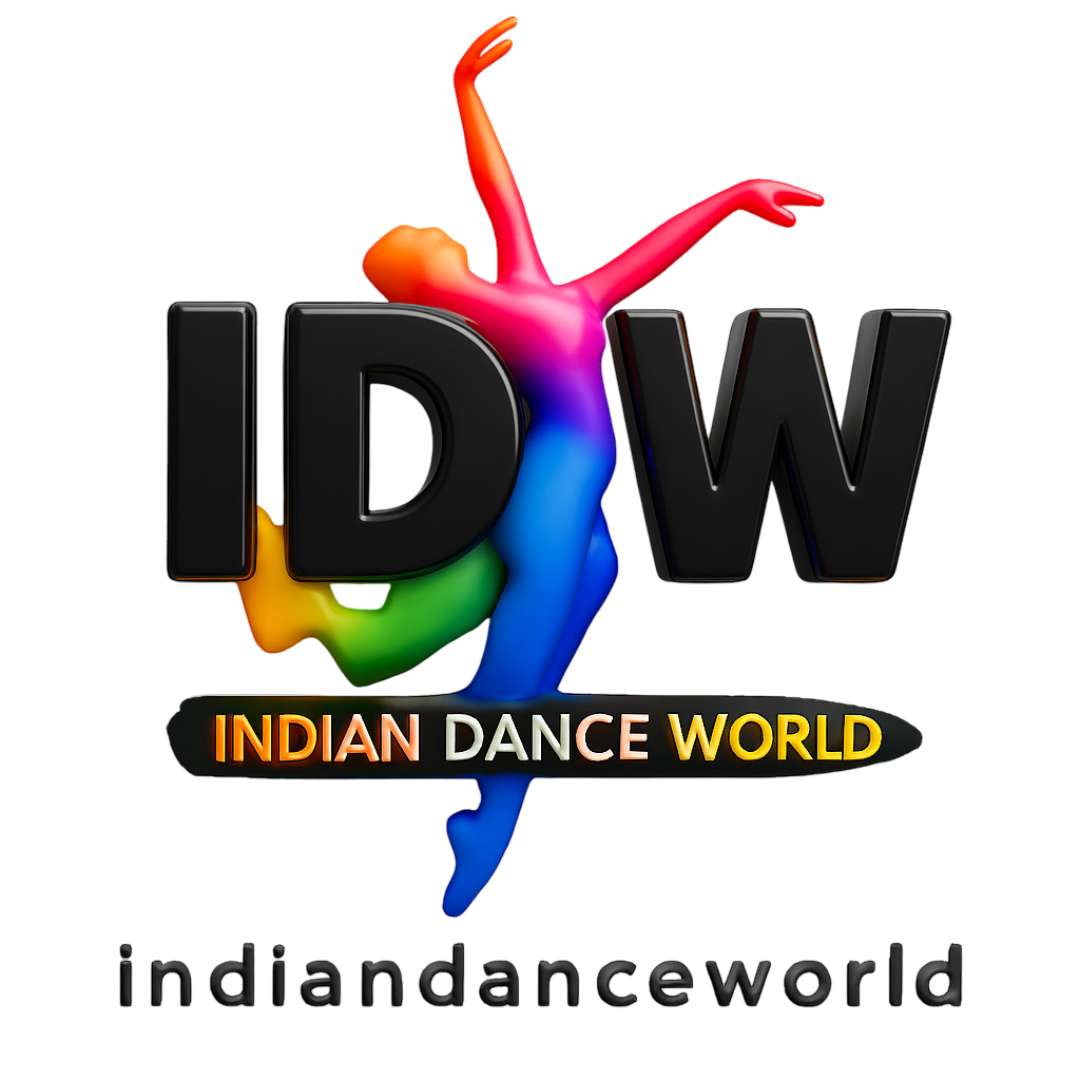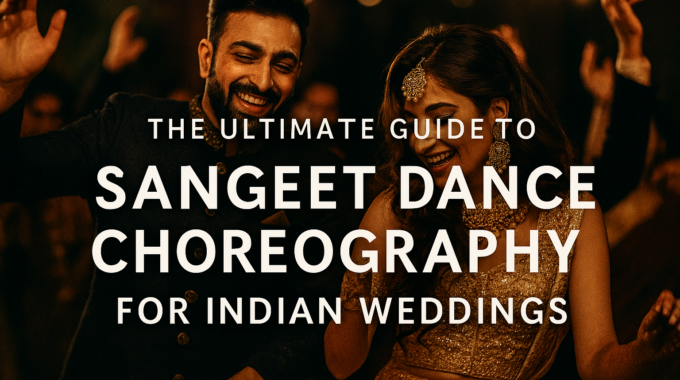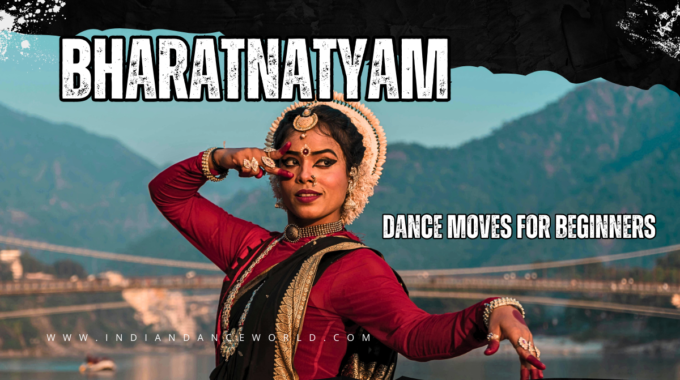Indian Weddings are full of life with exciting dance performances in many functions, especially Sangeet.…

Kathak vs. Kathakali: Know the Differences Between Two Iconic Indian Dance forms
Indian classical dance is a vibrant art form deeply knitted into the cultural fabric of India. With roots in ancient traditions, these dance forms cater not only as expressions of artistry but also as mediums that cast spiritual and cultural stories. Amongst the several classical styles, Kathak and Kathakali stand out for their unique characteristics and cultural origins. Kathak, a North Indian (Uttar Pradesh (U.P) dance style, is known for its telling footwork and graceful storytelling, often rooted in Hindu and Persian influences. In opposite, Kathakali, from the southern state of Kerala, superimposes comprehensive costumes, dramatic facial expressions, and complex gestures to depict mythological tales. This article aims to explore the key differences between Kathak and Kathakali dance forms, shedding light on their notable features and the cultural summary they each represent.

“Kathak traditionally has incorporated women actor-dancers”, different from “Kathakali which has traditionally been performed by an all-male team”
History background of Kathak and Kathakali
- Kathak: Emerging from northern India, Kathak finds its origins in the art of storytelling. The word “Kathak” itself stems from “katha,” meaning story, highlighting its primal motive: narrating tales from Hindu mythology. These stories were traditionally performed in temples, where the dancers, known as “Kathakars” or storytellers, used expressive movements, hand gestures, and facial expressions to captivate their audiences. As the dance form evolved, the influence of the Mughal courts left a significant mark on Kathak. This period introduced Persian and Islamic elements, leading to more sophisticated footwork, spins, and a refined, graceful style, making Kathak a peerless blend of Hindu and Mughal cultural elements.
- Kathakali: In Resistance, Kathakali originated in the southern state of Kerala, immersed in the classical traditions and cultural profusion of the region. Strongly inspired by Hindu epics such as the sri Ramayana and Mahabharata, Kathakali tells these ancient stories through a powerful conjunction of drama, music, and describing costumes. Developed around the 17th century, Kathakali is known for its cogent, stylized movements and highly expressive facial gestures. This dance form draws heavily from Kerala’s rich temple traditions and rituals, take care of an earthy, extreme aesthetic that reflects the grandeur and spirituality of its narratives.
Importance of Kathak and Kathakali dance Form Regional and Historical Context
The regional and historical contexts of both Kathak and Kathakali dance comparison are essential to understanding their particular styles and cultural value. Kathak’s evolution in the northern courts introduced a adorned, rhythmic style that blends storytelling with comely movements, reflecting the fusion of Hindu and Mughal traditions. Meanwhile, Kathakali’s development in Kerala’s temple rituals and Hindu epics showcases a dramatic, practically theatrical form of dance, deeply rooted in devotion and cultural storytelling. Each dance form thus captures the synopsis of its region’s artistic and spiritual inheritance, contributing to the rich tapestry of Indian classical dance.
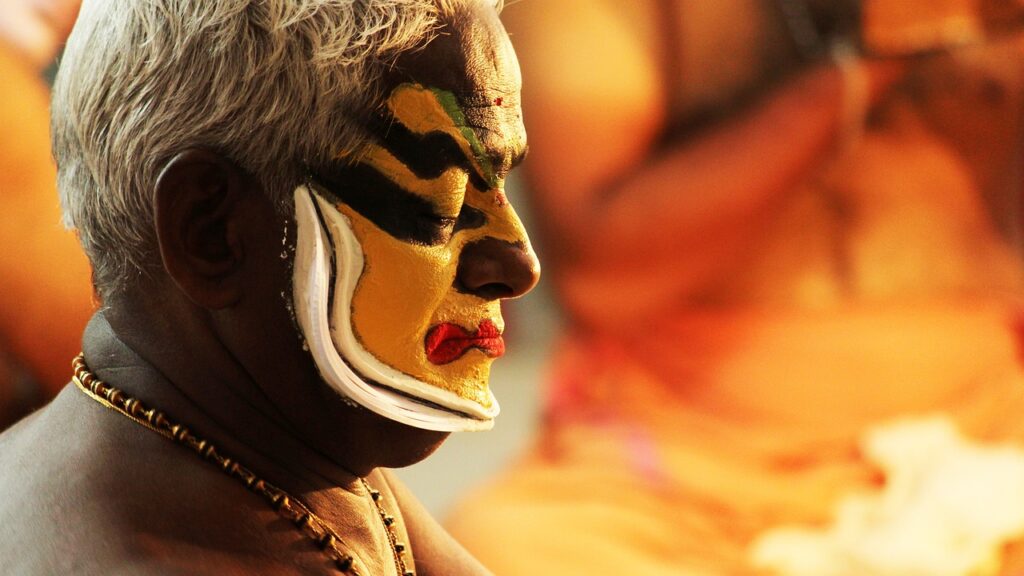
Kathak vs Kathakali : Costume and Makeup
- Kathak: Features elegant, flowing kathak costumes that are generally lighter to allow liberty of movement, reflecting the graceful and meaningful nature of the dance. Female dancers typically put on long, glared anarkalis or lehengas, while male dancers wear dhotis or kurtas. The makeup is ultra-fine, enhancing the dancer’s expressions without immense their natural features, as facial expression is a key component of Kathak storytelling.
- Kathakali: Known for its massive, vibrant kathakali costumes and detailed, dramatic makeup. Dancers put on brightly colored, multiple layered skirts, and the male characters wear large, colorful full and heavy jewelry’s. The makeup is detailed, often using shining paints to convey different character characteristic’s and emotions. Characters have specific facial paint colors to symbolizes traits such as bravery, divineness, or evil—green for heroes and gods, red for untamed or angry characters, and black for devilish figures.

Visual Elements and Symbolic Meanings about Kathak and Kathakali
- Kathak: The simplicity and stylishness of Kathak’s costumes allow the focus to remain on the dancer’s footwork, spins, and expressive hand moves, highlighting the dancer’s grace and the spiritual storytelling facet of the dance.
- Kathakali: The magnificent, visually striking elements spotlight the mythical and dramatic themes of the dance. Each costume element and color is symbolic, portraying the archetypal characters from ancient epics with a visual intensity that brings them to life, adding deepness to the storytelling.
Music and Instruments Kathak and Kathakali difference
- Kathak: The dance is traditionally accompanied by Hindustani classical music, highlight rhythmic patterns and expressive melodies. Instruments like the tabla, harmonium, and sitar are commonly used, creating a musical background that highlights the scenic, fluid movements of the dancer. The tabla provides complicated rhythms that the dancer explains through complex footwork, while the harmonium and sitar increase the storytelling feature of Kathak with melodic accompaniments.
- Kathakali: This dance form features a more percussion-centered musical approach, profound rooted in Carnatic music traditions. Instruments such as the chenda, maddalam, and cymbals are essential, producing a powerful, acute soundscape that matches the dramatic and stylized movements of Kathakali performances. The rhythmic beats set by these instruments synchronize with the bold gestures, facial expressions, and costumes, heightening the theatrical impact.
Differences in Musical Styles and How Kathak and Kathakali dancer Compliment the Performance
Kathak and Kathakali dance forms differ not only in their choice of instruments but also in their musical styles, which match their unique forms of expression. Kathak’s use of Hindustani classical music allows for elegant, storytelling movements, where the dancer’s footwork and gestures arrange in line with the melodic and rhythmic patterns. In contrast, Kathakali’s Carnatic-based, percussion-heavy music complements its acute, larger-than-life manifestation. The strong beats of the chenda and maddalam underscore the dramatic expressions, creating a powerful, immersive experience for the audience. This distinction in musical styles enhances the essence of every dance form, highlighting Kathak’s nicety and Kathakali’s feeling.
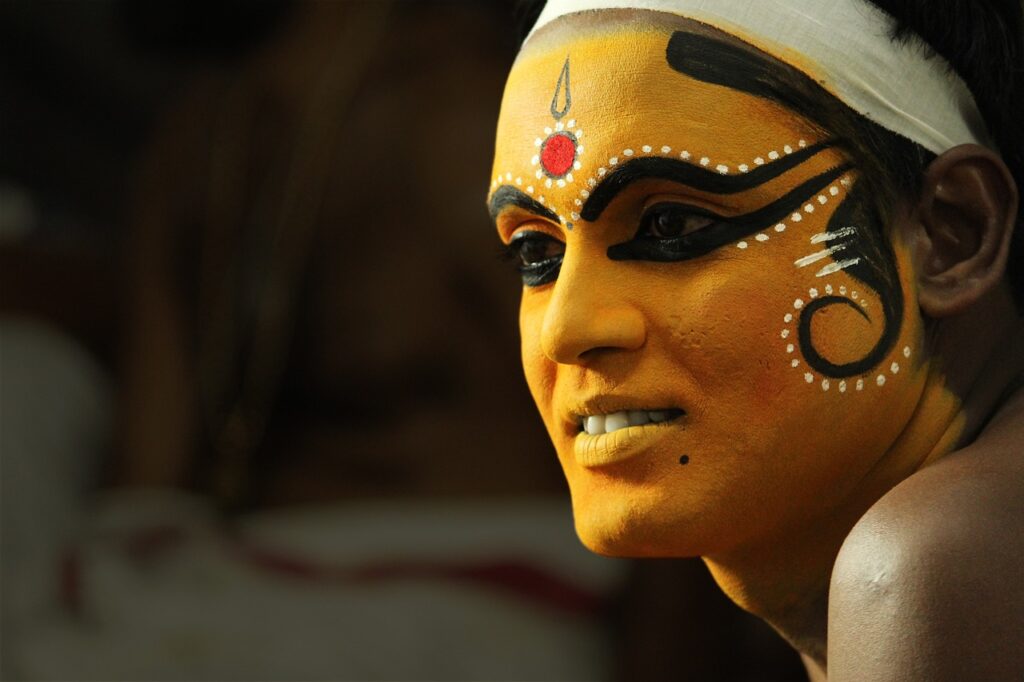
Dance Techniques and Movements: Kathak vs. Kathakali
- Kathak: make distinctive by fast, rhythmic spins (chakkars), percussive footwork (tatkaar), and meaningful hand movements (mudras), Kathak is a North Indian classical dance form. The movement style in Kathak is fluid so far rhythmic, with dancers oftentimes building speed and complexity in footwork and turns, which needs precision and graciousness. Kathak’s techniques, particularly its complex foot patterns and storytelling gestures, emphasize the dancer’s agility and musical timing. In Kathak, facial expressions and hand gestures accompaniment the lyrics or storyline, allowing the dancer to delineate tales of devotion, mythological stories, and tales of romance.
- Kathakali: This classical dance-drama from Kerala in South India employs slow, controlled, and energetic movements, focusing deeply on facial expressions (navarasa) and complex hand gestures (mudras). different from Kathak, which uses lighter, flowing costumes, Kathakali dancers put on detailed, colorful makeup and costumes that give them a larger-than-life countenance. The slow, intentionally movements in Kathakali, along with straightforward facial expressions and symbolic gestures, allow dancers to draft larger-than-life characters and stories, often drawn from Hindu epics like the Mahabharata and Sri Ramayana.
How Techniques contributed to Storytelling: In Kathak, the speed and fluidity of movements create a dynamic potency that draw up audiences into romantic or devotional narratives. The dancer’s connection with rhythm and rapid changes in expression allows stories to unreel in a lyrical, almost conversational manner. In Kathakali, the leisurely, controlled movements and vivid expressions lend themselves to portray dramatic mythological tales. The acute focus on facial expressions helps communicate complex emotions, creating an immersive experience for the audience as they witness each character’s alteration and journey.
The rudimentary difference in movement style—Kathak’s speed and lightness beside Kathakali’s powerful, theatrical control—exhibits how each form uses physical techniques to attend different storytelling objectives.
Difference between Kathak and Kathakali : Expression and Storytelling
- Kathak: Kathak is known for its intricate expressions and pretty hand gestures, which play a valuable role in conveying emotions. The dance form usually portrays romantic themes, love stories, or story’s from Hindu mythology. The dancer uses their face, eyes, and hand movements to manifest a wide range of emotions, focusing on complex footwork and spins. In Kathak, storytelling is commonly done through rhythmic footwork and fluid movements while maintaining a serene, expressive demeanor.
- Kathakali: Kathakali is categorized by its acute facial expressions and exaggerated gestures. The dancers put on elaborate costumes, makeup, and masks to Enlarge the storytelling, Generally depicting mythological clashs, battles, and emotional doubts. Kathakali involves highly stylized and dramatic expressions, which are increased through the dancer’s eyes, face, and body, each gesture and movement narrating a special story or event. The use of vibrant facial expressions is key to delivering the emotional severity of the performance.
The use of facial expressions and emotions in every dance form: In Kathak, facial expressions are intricate and restrained, focusing on the internal emotion and the grace of the movement. The storyteller usually uses expressions to evoke emotions like impulsiveness, devotion, or joy.
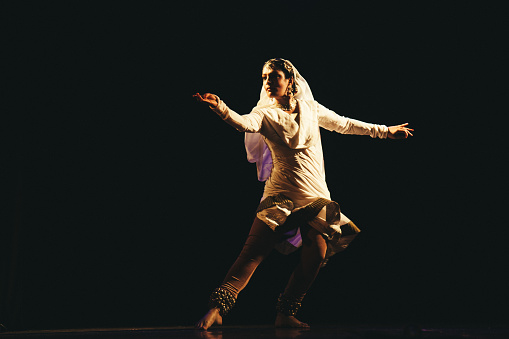
In Kathakali, facial expressions are much more encomiastic, intended to evoke strong emotions such as fury, sorrow, or fear. These expressions are paired with dramatic hand gestures and body movements to Explain the grandeur of mythological battles or divine collisions.
Both forms use facial expressions to engage the audience, but while Kathak emphasizes fragile, nuanced expressions, Kathakali leans towards vivid, high flown emotions that are Indiscernible to its dramatic storytelling.
also Read: Bharatanatyam classical dance history & information
Training and Learning Path of Kathak and Kathakali dance comparison
- Kathak: Kathak training intone complicated footwork, rhythmic patterns, and beautiful spins. Students start with foundational exercises in tatkar (footwork) and basic hand movements, gradually progression to more intricate rhythms, pirouettes, and storytelling expressions. Costume requisitions are simpler in day-to-day practice, focusing instead on technique and meaningful skills. Learning Kathak also involves a deep understanding of classical music, as it requisiteness synchronization with the tabla or pakhawaj.
- Kathakali: Kathakali training is highly difficult, expected intense physical conditioning and body control, as well as stamina to perform long acts. Training includes exercises to strengthen facial muscles, eye movement control, and flourishy full-body movements, which are vital for storytelling in Kathakali’s significant style. Students also study Mudras (hand gestures) and adhere a harsh regimen to embody diverse characters. Costume preparation is detailed, as Kathakali requires special makeup and costumes for every role.
Differences in the Training Methods and Learning Journeys: While Kathak focuses on rhythm, spins, and pithy storytelling with beautiful gestures, Kathakali training is rooted in evolutive physical strength, facial expressiveness, and the patience needed to convey dramatic narratives. Kathak students commonly have a shorter, less strenuous preparation period, while Kathakali practitioners wend a more prolonged and profound training regimen to pedagogue the demanding physical and emotional requirements of the dance.
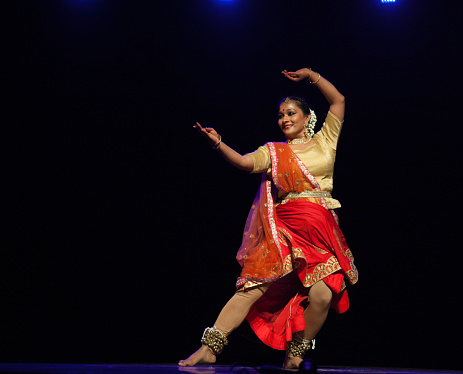
Conclusion about Kathak vs Kathakali
Kathak and Kathakali, though both are the major Indian classical dance styles, each has specific characteristics that set them Different. Kathak, rooted in the storytelling traditions of North India, emphasizes intense footwork, fluid spins, and expressive gestures, commonly set to rhythmic cycles. In opposition, Kathakali, produced from Kerala in South India, is known for its extensive costumes, bold makeup, and acute facial expressions, creating a dramatic, nearly theatrical presentation that focuses on mythological narratives.
The shielding and exaltation of Kathak and Kathakali are crucial, as they represent not only India’s cultural diversification but also the inheritance and spiritual history embedded within these dance forms. By safeguarding these dances, we help retain centuries-old traditions that keeping to inspire and link communities globally.
We stimulate readers to support and explore Indian classical arts, whether by participating performances, engaging with artists, or just learning more about these vibrant traditions, ascertaining their legacy endures for generations to come.
